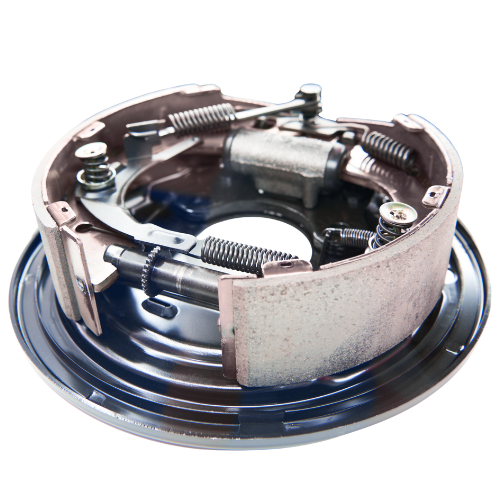Explore the four key components that make up a truck’s brake system—engineered to ensure safe, reliable, and powerful stopping performance on every road.

In the high stakes environment of commercial trucking and logistics, no system is more critical than the air brake assembly. At the heart of this system, working tirelessly to ensure stopping power is always available, are the slack adjusters. These components maintain the precise clearance between the brake shoe and the drum. Historically, this was a frequent, manual task, but modern fleet operations demand automation. The shift from manual to automatic slack adjusters represents one of the most significant advancements in commercial vehicle safety and maintenance, directly influencing everything from stopping distance to the lifespan of the brake chambers and overall operational efficiency.
The fundamental purpose of any slack adjuster is to compensate for the normal wear of the brake linings and drums. As these parts wear down, the clearance increases, requiring the brake chambers to push the pushrod further to engage the brake. This increased travel, or "slack," reduces the braking force applied and extends the stopping distance, creating a serious safety hazard.
The slack adjuster is the critical mechanical linkage that converts the straight-line force from the brake chamber into the rotational torque required to stop the wheel. It functions as a lever arm connecting the pushrod to the S-camshaft.
The braking sequence involves a rapid mechanical conversion:
Crucially, the adjuster contains an internal gear system that monitors the pushrod stroke length. This stroke is the travel distance before the brakes engage, and it must stay within strict safety limits (typically 1.5 to 2 inches). As the brake shoes wear, this distance increases, creating dangerous "slack." The automatic adjuster is engineered to eliminate this excess slack. During the brake release cycle, the mechanism checks the distance the pushrod traveled. If the stroke exceeded the limit, the adjuster automatically rotates the S-camshaft a fraction further. This immediate, subtle correction minimizes the gap between the shoes and the drum, restoring the system to its optimal stroke length and ensuring consistent braking power.
For decades, the standard was the manual slack adjuster. While effective in principle, the reliance on human intervention introduced significant variables and substantial operational costs for trucking industry B2B partners.
Labor and Maintenance Load
The key challenge with manual adjusters was the need for constant, scheduled maintenance. A driver or technician had to physically crawl under the vehicle, often in unfavorable conditions, to check the brake chamber pushrod travel and manually turn a bolt to take up the slack.
.jpeg)
Modern fleets overwhelmingly rely on the automatic slack adjuster of trucks. These devices continuously monitor and adjust the slack during regular braking operations, ensuring the pushrod travel is always maintained within specification.
Enhanced Performance and Efficiency
The semi truck slack adjuster provides continuous, precise adjustment, which yields several key operational benefits:
The Challenge of Automatic Adjusters
While superior, automatic slack adjusters are not entirely maintenance free. Their primary operational challenge lies in diagnostics and failure modes.
The performance of the slack adjuster is intrinsically linked to the longevity of the brake chamber. The brake chamber is the primary actuator of the air brakes system, using compressed air to create mechanical force.
A low quality or poorly maintained slack adjuster forces the brake chamber pushrod to travel beyond its intended limits. This excessive travel puts unnecessary stress on the internal diaphragm, leading to early failure and requiring premature brake chamber replacement. This is why procurement teams must source reliable components. Furthermore, proper adjustment influences the entire system, from the brake shoes and linings to the forces transmitted to the brake calipers. The quality of components determines the difference between predictable performance and excessive maintenance downtime.
GAPASA is an IATF 16949-certified leader in manufacturing premium quality truck and trailer brake parts, with over 20 years of experience serving fleets, distributors, and OEMs worldwide. Our advanced manufacturing facility, equipped with forging, casting, and CNC technology, allows us to maintain strict control from raw materials to final assembly, guaranteeing the consistency and precision vital for brake system safety. We are committed to long term partnerships that help our customers keep their fleets safe and moving efficiently.
As dedicated truck brake calipers manufacturers, GAPASA offers a specialized product range, focusing on system-wide reliability:
We offer a robust secondary inventory that covers various components including air springs, brake discs, brake drums, and electric & electrical parts, ensuring we are a single, reliable source for all your commercial vehicle component needs.
The choice of slack adjuster has a profound and immediate impact on fleet safety, maintenance costs, and operational efficiency. While manual slack adjusters presented significant challenges related to consistency and labor demands, modern automatic slack adjusters provide the consistency and precision necessary for today's high demand logistics environment. By utilizing IATF 16949-certified components like those from GAPASA, fleets ensure their brake chambers and entire air brakes system operate within peak parameters, keeping vehicles safe and running efficiently for every mile.